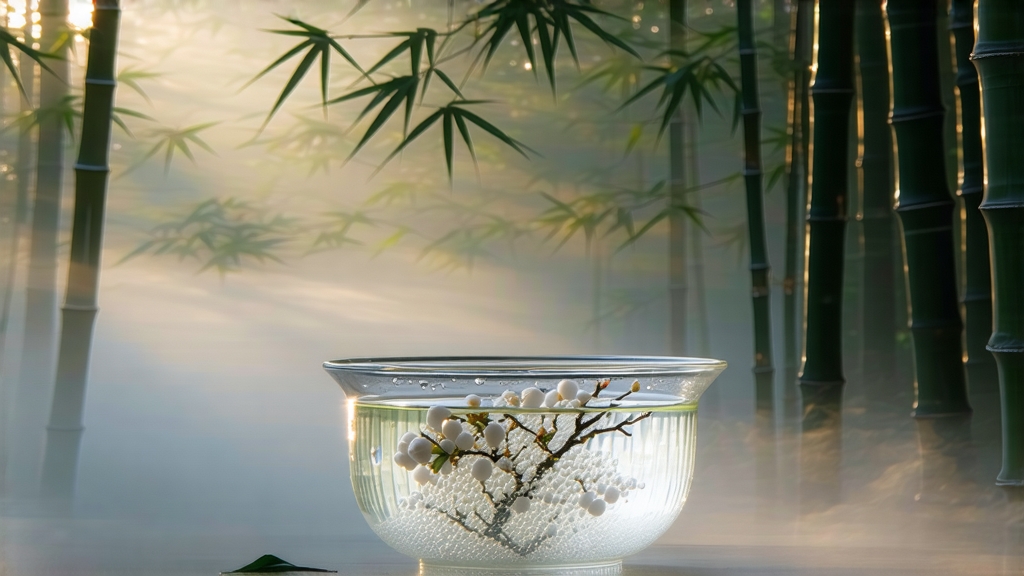
Among the six major families of Chinese tea, white tea is the least theatrical yet the most elusive, and within that quiet clan Bai Hao Yin Zhen—literally “White-Haired Silver Needle”—sits like a pale moon on a still lake. All white teas share the same minimal intervention—only withering and drying—but Silver Needle is the most ascetic: only the unopened leaf bud, plucked for a few spring mornings, is deemed worthy. The result is a liquor so translucent it seems lit from within, and a fragrance that whispers of hay, melon skin, and the cool side of a stone.
History: from imperial tribute to global cult
The first written record of “white tea” appears in Song-dynasty treatises of 1064 CE, yet those cakes were green tea that happened to bear white down. The bud-only style now called Silver Needle emerged in Fuding county during the late 1700s when improved transport allowed fresh buds to be withered and dried on the spot rather than compressed for caravan travel. By 1857 the Da Bai cultivar—Big White—was grafted onto local tea gardens; its thick bud coat maximized down and sugar, turning Silver Needle into a lucrative tribute. European merchants encountered it at the Canton trade fairs of 1880-1890, christening it “Flowery Pekoe” and shipping it to London, Vienna and St. Petersburg where it fetched prices above first-flush Darjeeling. A century later, in 2010, Fuding Silver Needle was granted China’s GI (Geographical Indication) status, and boutique cafés from Melbourne to Brooklyn now list it as the entry point for tea novices seeking elegance without astringency.
Micro-terroirs: why Fuding and Zhenghe taste different
Although the national standard allows any bud-white tea to be labeled Bai Hao Yin Zhen, connoisseurs recognize two authentic terroirs separated by less than 80 km but tasting oceans apart. Fuding, on the eastern coast of Fujian, sits at 27° N where red granitic soils meet a maritime climate; constant on-shore breezes lengthen the withering cycle to 48-60 hours, preserving higher amounts of L-theanine and giving a creamy, orchid-like cup. Zhenghe, inland and 400 m higher, experiences wider day-night temperature swings; shorter withering (36-42 h) and slightly oxidized edges create a liquor that is deeper gold, with notes of chestnut honey and ripe papaya. A third, lesser zone—Jianyang—produces buds that are plumper yet leaner in aromatics, often used for domestic blending. Global imitations from Yunnan, Assam or Rwanda may look silvery, but their buds contain less amino acid and tend toward grassy bitterness after six months.
Craft: the art of doing almost nothing
Silver Needle is harvested for only ten days each spring when the bud reaches 2.5–3 cm but before the first leaf unfurls. Pickers work at dawn, wearing cotton gloves to avoid bruising the trichomes that will later appear as “white hairs.” The buds are spread on bamboo trays 1 bud thick and placed in a sun-room with 65–70 % relative humidity; they are never rolled or pan-fired. For the first four hours the tea is allowed to “sun-wither,” a gentle dehydration that initiates enzymatic conversion of monosaccharides. As midday heat rises, trays are moved onto shaded racks where convective air continues moisture loss; masters shuffle the buds every twenty minutes so that each side receives identical airflow. At dusk the tea is transferred to a low-temperature charcoal oven (40 °C) for a final 20-minute bake that locks in 8–10 % residual moisture—high enough for micro-oxidation to continue during aging, low enough to prevent mold. The entire process consumes 4.5 kg of fresh buds to yield 1 kg of finished tea, explaining the lofty price.
Aging: when white becomes dark gold
Unlike green tea, Silver Needle is expected to evolve. Under dry, odor-free conditions the bud’s endogenous enzymes slowly oxidize flavonoids, producing deeper apricot liquor and notes of marzipan and sandalwood. Chinese collectors vacuum-seal cakes of 2012 Silver Needle that now fetch triple the price of new tea; the optimum aging window is considered 7–12 years, after which gains in complexity plateau. Western